This article is a companion piece to this video
In this episode of On Subrogation: Diminished Value, Rathbone Group partner Jason Sullivan discusses the conditions of diminished value as it applies to subrogation recovery. Is diminished value covered when pursuing a tortfeasor in an insurance claim? It depends…
Can Subrogation Recover Property That’s Been Ruined?
When an insurance claim for property damage was paid out and there is a clear case for subrogation liability, the next challenge is quantifying the worth of that property. Virtually all types of property lose market value simply by being damaged and repaired, which poses a problem of fairness – someone else damaged the property, but the damaged party is unable to fully recover.
Diminution of Value in Property Subrogation
If repairs don’t fully restore the property to full function and worth, where does the missing value go? There are two types of diminution of value (DIV) claims:
- Inherent: The mere fact the asset was damaged diminishes its value regardless of the quality/efficacy of the repairs.
- Repair-related: Repairs are substandard or are unable to restore full function/value to the asset.
To prove a DIV claim in your subrogation case, you must provide evidence the asset has been devalued post-repair, and that the damages that required repair were a direct result of the incident. Courts consider several factors when hearing a DIV argument, including the property’s pre-loss and post-loss market values, the nature and extent of damage, and the quality/completeness of the repairs.
These subrogation claims require thorough investigations and, often, expert testimony; effectively proving DIV affects the course of the subrogation process. They can affect the total potential subrogation recovery so are important in comprehensive damage assessments before making a subrogation demand.
Diminished Value in Auto Subrogation Claims
Diminished value is defined as the difference in value of your vehicle before a collision and after a collision, but also after the vehicle has been repaired. For instance, say your car is worth $20k and you have an offer on it for $20k. But then the buyer finds out the car was in a rear-end accident two years before and is now only willing to pay $18k. The diminished value is $2k.
However, it is rarely that simple when dealing with diminished value in insurance lawsuits. Insurance companies will often use a rough formula to determine the coverage cap on diminished value (DVC):
- Determine the actual cash value of the vehicle (i.e. KBB or NADA values)
- Determine the percentage cap of diminished value coverage (i.e. 10% DVC on a $20k car is $2k)
- Subtract multipliers (0-1) of certain factors (i.e. age, mileage, severity of impact damage)
Take the example of that $20k car:
- $20k cash value
- 10% DVC = $2k DVC
- a. Severe impact damage – multiplier 1 = $2k DVC
- b. Old car with high mileage – multiplier .25 = $500 DVC
In this case, coverage for diminished value would be capped at $500.
Determining Whether Diminished Value Can Be Recovered
Diminished value is not always a part of recoverable losses in an auto insurance dispute. It will depend on the state in which the lawsuit is filed as well as what the insurance policy language covers.
The first step a subrogation attorney must take if their client needs to recover from 3rd-party negligence is the state’s tort law: will the state hold the at-fault party responsible for diminished value? About a dozen states will, so carriers do well to retain a subrogation law firm with specialists, adjusters and attorneys licensed in jurisdictions across the nation.
In a certain Indiana case on diminished value, Allgood v Meridian Insurance Co (2005), the state’s supreme court was asked to rule on a specific circumstance:
- The insured was suing their own insurance company under the claim that the policy covered diminished value.
- The court determined the argument meant that the case was not one of tort law or making the insured whole; it was a contract issue.
- The court then looked at the policy language and determined that the policy did not, in fact, cover diminished value.
- However, in Indiana, should the carrier have paid out the diminished value, they would still have had a right to recover those losses via subrogation.
Therefore, counsel handling a subrogation claim involving diminished value must first determine (1) if the state allows diminished value recovery from a 3rd party and (2) if the insurance policy covers diminished value. These two factors must align in order to pursue recovery of diminished value.
For more educational material on subrogation, visit our YouTube channel or podcast library for more episodes of On Subrogation, where Rathbone Group attorneys break down tricky topics into digestible discussions.
If you have a question we have not yet covered, reach out at video@rathbonegroup.com or podcast@rathbonegroup.com to see your subject covered in a future episode of On Subrogation.
